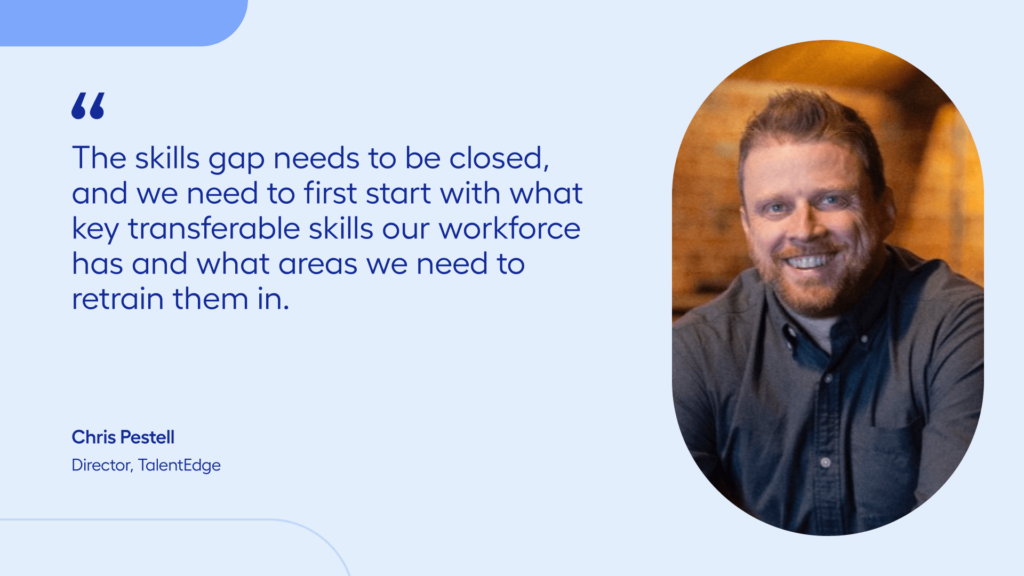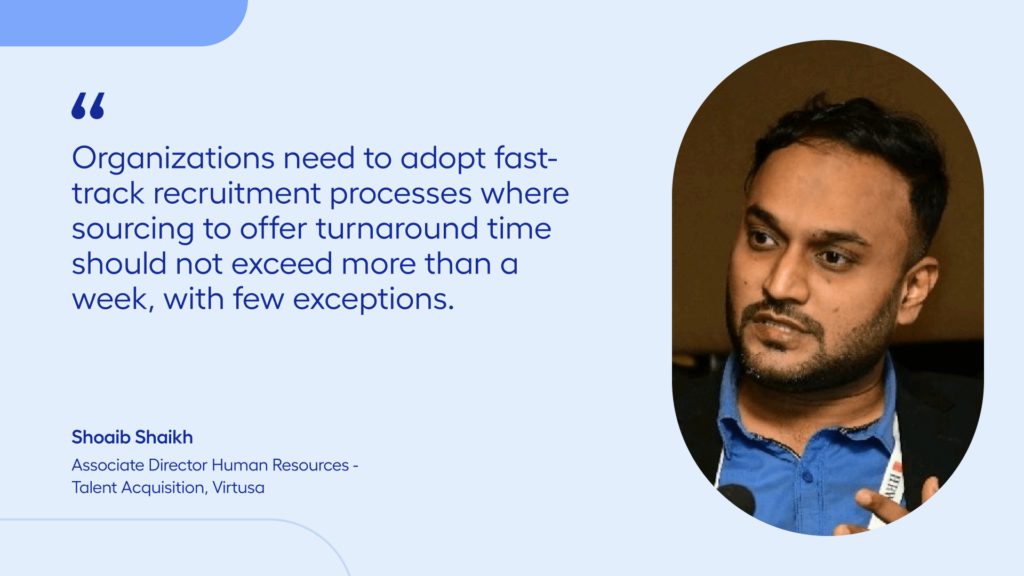In a world experiencing mass layoffs, the concept of talent shortages may at first seem counterintuitive. Surely vast quantities of people losing their jobs is leading to ample amounts of workers flowing into the global talent pool?
But the problem is far more insidious than it first appears. While in some cases it is about pure supply and demand, it’s more a question of a mismatch between the skills people possess and the skills businesses need. These skills tend to be technological, with AI ability in particular demand.
Without ready access to skilled talent, businesses are left spinning their wheels, unable to innovate and grow. This is not some fringe issue; rather it is an existential threat to the world economy. Indeed, according to a new report from IDC, by 2026, more than 90% of organizations worldwide will experience an IT skills crisis, causing $5.5 trillion of revenue loss.
It’s a big deal, so instead of talent shortages, it’s time to give the issue a name with a little more bite: The talent crunch.
Businesses must get proactive about attracting talent
In the face of such a serious problem, it may be tempting for businesses to point fingers at governments to sort it out for them. Education systems more in tune with the modern reality of work would be a good place to start.
But for improved curriculums to bear fruit would involve significant lead times – time that businesses simply don’t have. With the talent crunch not going anywhere soon, leaders need to adapt and find ways to one-up the competition and hire in spite of shortages right now.
Solving the talent crunch
Thankfully, there are countless possible strategies to combat the threat and attract in-demand talent, from building company cultures that better align with the meaningful work 41% of people are looking for, to offering benefits more tailored to individual needs.
In conversation with experts we’ve settled on three stand-out techniques that companies are currently using to prevent the talent crunch from chewing them up and spitting them back out again.
Upskill and reskill to close the skills gap
There’s a compelling argument that instead of scouring the talent wilds for the unicorn with exactly the right combination of skills they need, businesses should instead take a closer look at the talent they already possess.
By up- or reskilling existing workers via training and development schemes, businesses are able to populate hard-to-fill roles and turn relatively modest investments in people into real returns. Indeed, research from ATD finds that companies which offer comprehensive training programs have 218% higher income per employee than companies without formalized training.
Chris Pestell, director of TalentEdge, believes upskilling is the future: “The skills gap needs to be closed, and we need to first start with what key transferable skills our workforce has and what areas we need to retrain them in.”

That auditing can reveal hidden strengths within an organization, particularly as some workers don’t know they have a talent for another area of work. According to Pestell, the trick is “unlocking this hidden talent that is needed for the future of work.”
A secondary benefit of upskilling
One significant advantage of this approach is that in-house workers already possess an in-depth knowledge of company culture and therefore require less ramping up time before they are fully productive. That’s a valuable attribute for distributed teams in particular.
As Multiplier CEO Sagar Khatri says, globally distributed teams are at a disadvantage because of a lack of communication. But the presence of those who have been with the company for a long time in positions of leadership short circuits this issue, because they have established relationships and deep knowledge of the culture within the business.
Embrace the flexibility talent craves
Despite normal life having long since resumed its course, the after-effects of the COVID-19 pandemic are still keenly felt. It’s no use pretending the world of work hasn’t changed. Despite the prevalence of return to office mandates, it’s still the case that 83% of global workers want hybrid and remote work options.
If businesses hope to attract talent for in-demand technological roles, they’ll need to accommodate these preferences, as Pestell emphasizes: “Since the pandemic, there has been a huge shift in people’s views and relationships with work. Companies will need to adapt to entice the best talent.”
Dive into a deeper talent pool
Part of that adaptation is in being more flexible about hiring workers from overseas. After all, why fish from a small pond when there’s an ocean out there?
The problem is that to actually hire abroad was previously the preserve of the largest enterprises, capable of stumping up the capital to create massive offshoring bases.
Thankfully, with the advent of technology like EORs, the feasibility of hiring abroad–and navigating all the paperwork that comes with it–has massively increased. Not only that, but as the increased desirability of remote options among workers suggests, talent is now much more inclined to look abroad for opportunities.
Those factors are the reason that 35% of organizations currently allow employees to work remotely from other countries, according to Deloitte. By joining the companies in that statistic, businesses can overcome the patchwork nature of tech talent availability that currently sees Paris having more than twice as many technology workers as Chicago, but less than half as many computer programmers.
Look beyond the obvious choices
Flexibility is important in another sense, too. While the scarcity of talent is among the top concerns of hiring managers (55% of those experiencing hiring difficulties report competition from other employers as being their top challenge), a certain stubbornness is creeping into their attitudes around the candidates to select. How else to explain widespread reports of people finding securing a job tougher than ever?
Companies need to meet candidates half way, looking again at second choices instead of purely settling for the best of the best–or else risk being left with no candidates at all.
Virtusa’s Shoaib Shaikh believes that, currently, “many candidates are distracted by other opportunities due to delays in the hiring process. According to him, “organizations need to adopt fast-track recruitment processes where sourcing to offer turnaround time should not exceed more than a week, with few exceptions.”

The view from the cybersecurity industry
The more technical the industry, the more this perfectionism can rear its head, as Derek Fisher, Founder of Securely Built, explains. “In the cybersecurity industry, a significant part of the perceived talent shortage lies in the way organizations and recruiters narrow down candidate pools”
The problem is that the process often relies on measurable factors like degrees and certifications to evaluate candidates, which “excludes many capable individuals who possess the necessary analytical and technical skills but lack formal qualifications or experience.”
With even entry-level roles increasingly requiring experience (one study found that 35% of postings for “entry-level” positions asked for years of work experience), hiring managers are limiting the number of eligible candidates and also overlooking sources of ready-to-go talent.
“To address this, companies must shift their focus from traditional credentials to actual potential and dedication, thereby widening the talent pool and enhancing their ability to attract and retain skilled cybersecurity professionals,” Fisher adds.

Bite back against the talent crunch
The structural changes that would end the talent crunch for good are not coming around any time soon. In the meantime, businesses need to strike out on their own to overcome the many inefficiencies inherent in the talent supply
Whether it’s by upskilling workers and promoting from within, embracing a more flexible approach to work, or dropping overly stringent demands on talent (even better, all three), there are steps you can take to escape stasis and unlock the productivity- and growth-boosting talent that is out there.







